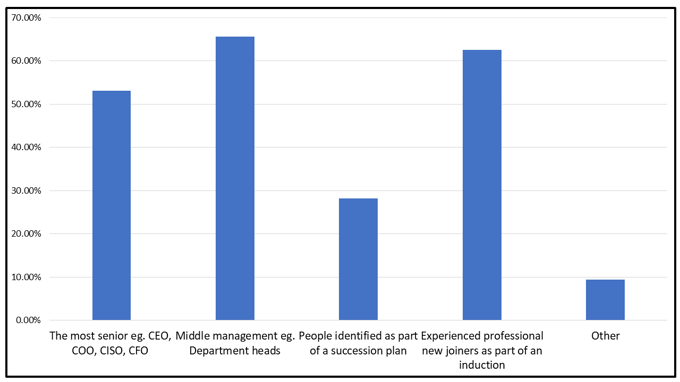It's no secret that we want to retain the information we learn for as long as possible. We examine how spaced learning can help beat the forgetting curve.
Learning is an essential part of our lives. Remember back in the days of high school or university studies, when cramming for an exam was the norm? You would probably spend hours locked in a room with your books, trying to absorb as much information as possible in a short amount of time.
But how much of that information did you actually retain? Chances are, not much.
Enter spaced learning – a learning theory that takes into account the science of long-term memory and how it affects our ability to retain information.
Using spaced learning to beat the forgetting curve
- How does memory work?
- What is the forgetting curve?
- What is spaced learning?
- How does spaced learning beat the forgetting curve?
- Why compliance training needs spaced learning
How does memory work?
Before we dive into what spaced learning is, let's take a step back in time and meet the man who first discovered the workings of memory: Hermann Ebbinghaus. He conducted pioneering research into the nature of long-term memory in the late 1800s.
Ebbinghaus discovered that memory loss follows an exponential pattern, but there are specific factors that contribute to this decline. By addressing these factors, it's possible to reduce memory loss and increase retention rates.
What is the forgetting curve?
Through his memory loss experiments, Ebbinghaus plotted a graph that showed his memory loss over time when recalling lists of made-up words. This graph became known as the Ebbinghaus Curve or the Forgetting Curve. Since then, others have expanded on his work and researched how to mitigate this curve.
Some ways to address the factors that contribute to memory loss include reviewing key concepts, relating information to real-world examples, effective communication of information, and how we feel about what we're learning.
What is spaced learning?
These ways form the basis of what we now refer to as spaced learning. The theory of spaced learning states that breaking down training courses into shorter, spaced-out interventions is the most effective approach to combating memory loss.
Here's how it works: instead of cramming all the information into one long, drawn-out training session, you break it down into shorter, spaced-out intervals. Not only does this make the training more engaging and fun, but it also has been proven to lead to faster mastery of the subject and better retention of information over time.
Research has shown that this approach is the most effective way to combat the memory loss curve and achieve competence in a subject in a shorter amount of time. The structure and method of communication can greatly impact how well we remember information.
Our emotional state can also play a role in how well we retain information. Concepts need to be related to real-world examples for them to have meaning and stick in our minds.
In our recent webinar, we asked the audience who would benefit most from spaced learning with the option to select multiple groups of people in the firm. It's interesting to note that 66% of the audience chose middle management, closely followed by 62.5% thinking that experienced professional new joiners would find value in this form of learning as part of an induction.
How does spaced learning beat the forgetting curve?
It is possible to forget the forgetting curve with spaced learning. Need proof? Look no further than a classic study conducted by Baddeley and Longman in the 1970s for the post office. They divided 10,000 employees into four groups and tracked their progress in learning how to mechanically sort mail.
The employees who trained for one hour once a day attained a new skill in fewer hours than all other groups and demonstrated faster speed to competence, as well as better retention of information.
Using spaced learning, organisations can train employees in manageable, bite-sized pieces, making the process less daunting and more engaging.
Why compliance training needs spaced learning
By reviewing training information at regular intervals, employees are more likely to retain the information and apply it in their day-to-day work, reducing the risk of compliance breaches.
In a recent study conducted by a major financial services organisation, employees who received training using spaced learning techniques showed a 25% improvement in knowledge retention compared to those who received traditional, one-off training sessions.
And the best part? The employees actually reported enjoying the training more and felt better equipped to handle real-life compliance scenarios.
So there you have it! Spaced learning isn't just a fancy buzzword; it's an unforgettable training technique. This is a proven and effective method for managing and mitigating compliance risk.
Looking for more compliance insights?
We have created a series of comprehensive roadmaps to help you navigate the compliance landscape, supported by e-learning in our Essentials Library.
We also have additional free resources such as e-learning modules, microlearning modules, and more.
Explore our collectionWritten by: Rich Gill
Rich draws on 25 years of learning experience to help Skillcast partners. After 18 years serving as an Officer in the British Army, he moved into the commercial world. His unparalleled academic background includes a PGCE in Further Education and an MSc in Computer-Based Learning & Training. He is a Learning Technologies Conference past presenter and e-learning award winner.




